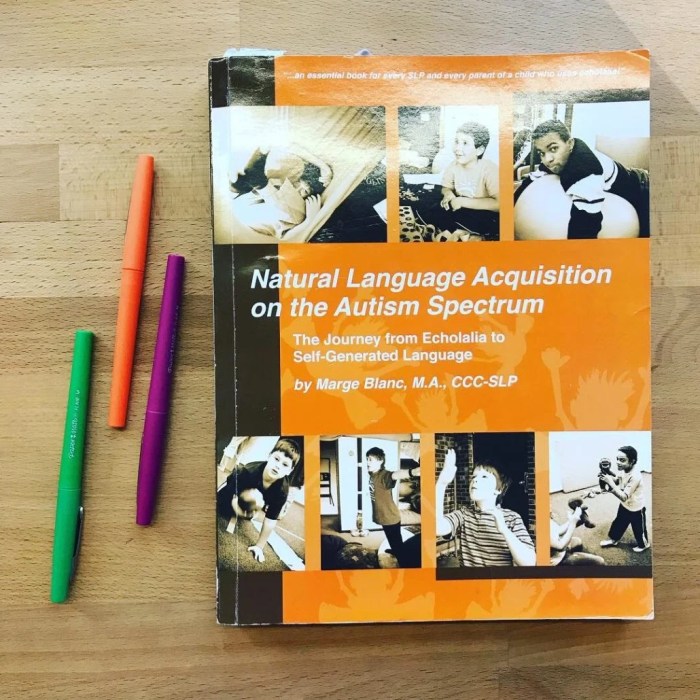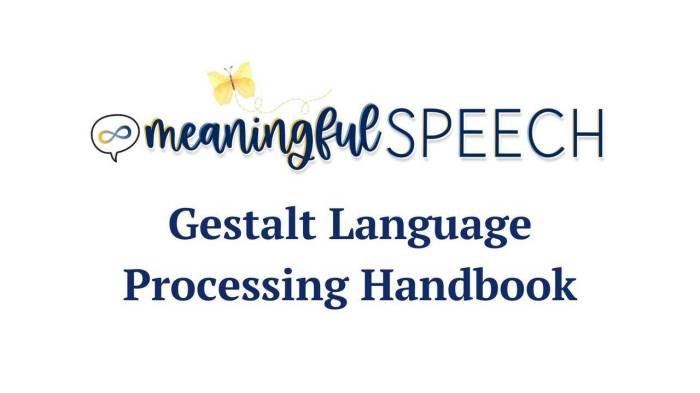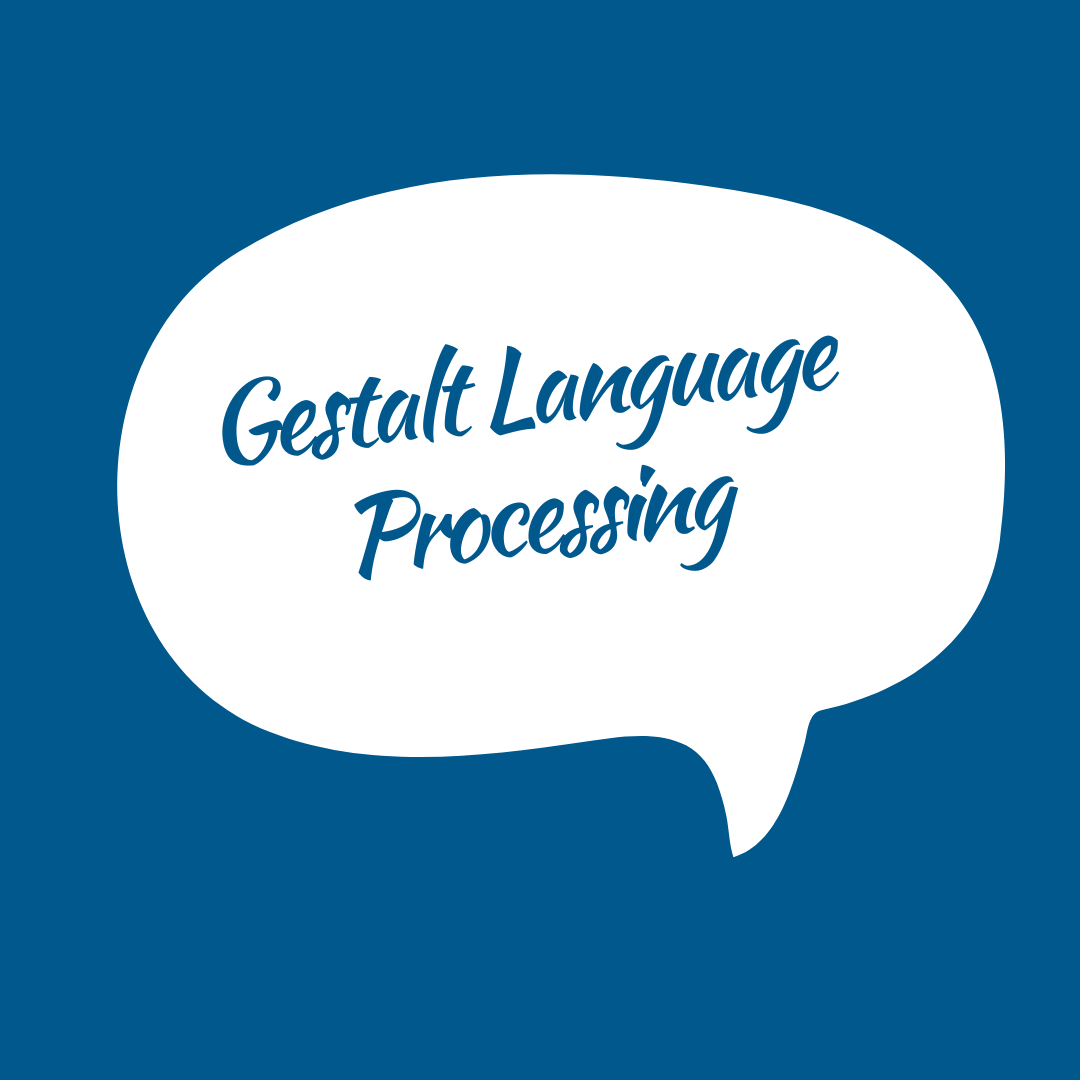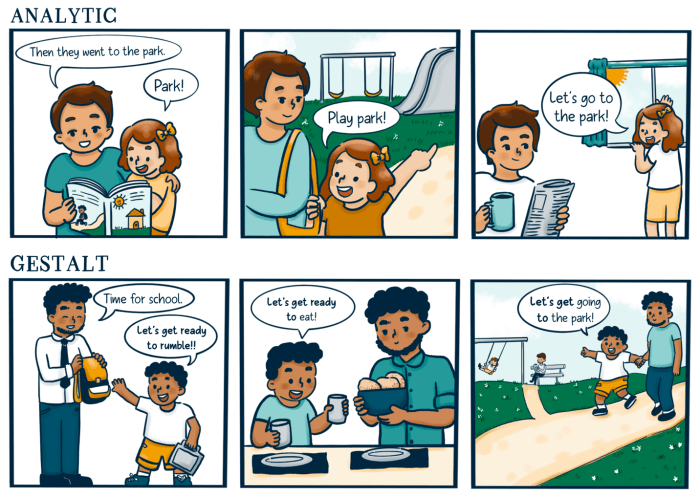At the heart of goal-setting lies the Gestalt Language Processing Goal Bank, an innovative approach that harnesses the power of Gestalt language processing to revolutionize the way we set and achieve our aspirations. By integrating the principles of Gestalt psychology with the structured framework of a goal bank, this transformative tool empowers individuals to define, track, and accomplish their goals with unprecedented clarity and effectiveness.
Gestalt language processing, rooted in the notion that the whole is greater than the sum of its parts, emphasizes the importance of perceiving and understanding patterns and relationships within language. When applied to goal setting, this approach enables individuals to break down complex goals into manageable chunks, identify interdependencies, and create a cohesive roadmap for success.
Gestalt Language Processing

Gestalt language processing (GLP) is a theoretical framework that emphasizes the role of perceptual organization in language comprehension. It proposes that language is processed in wholes, rather than as a series of discrete elements, and that the meaning of a word or phrase is determined by its context.
The key principles of GLP include:
- The principle of Prägnanz:The tendency to perceive stimuli in the simplest and most regular way possible.
- The principle of similarity:The tendency to group similar elements together.
- The principle of proximity:The tendency to group elements that are close together.
- The principle of closure:The tendency to complete incomplete figures.
GLP has been used to explain a wide range of phenomena in language comprehension, including:
- The perception of speech:GLP suggests that we perceive speech as a continuous stream of sound, rather than as a series of discrete phonemes.
- The comprehension of words:GLP suggests that we understand the meaning of words by recognizing their Gestalt, or overall form.
- The comprehension of sentences:GLP suggests that we understand the meaning of sentences by recognizing their syntactic structure.
Goal Bank

A goal bank is a systematic repository of goals that are aligned with an organization’s strategic objectives. It serves as a centralized resource for tracking and managing individual and team goals, ensuring that they contribute effectively to the overall success of the organization.
The purpose of a goal bank is to provide a structured framework for goal setting and management. It enables organizations to:
- Define clear and measurable goals that are aligned with the organization’s strategic priorities.
- Track progress towards goals and identify areas for improvement.
- Foster collaboration and accountability among team members.
- Identify and mitigate potential risks and challenges.
Best Practices for Creating and Maintaining a Goal Bank, Gestalt language processing goal bank
To ensure the effectiveness of a goal bank, it is essential to follow best practices in its creation and maintenance:
- Involve stakeholders:Engage key stakeholders from across the organization in the process of identifying and defining goals to ensure alignment and buy-in.
- Use SMART criteria:Goals should be Specific, Measurable, Achievable, Relevant, and Time-bound to ensure clarity and focus.
- Prioritize goals:Establish a system for prioritizing goals based on their importance and impact on the organization’s objectives.
- Assign ownership:Clearly assign responsibility for each goal to individuals or teams to foster accountability.
- Monitor progress:Regularly track progress towards goals and identify any deviations from the expected trajectory.
- Review and adjust:Conduct periodic reviews of the goal bank to assess its effectiveness and make necessary adjustments to ensure alignment with the organization’s evolving needs.
Integrating Gestalt Language Processing and Goal Bank

Integrating Gestalt language processing and goal bank offers numerous potential benefits. Gestalt language processing provides a comprehensive framework for understanding the cognitive processes involved in language comprehension and production. By leveraging this framework, goal bank can enhance goal setting and achievement through improved communication and understanding.
Enhancing Goal Setting and Achievement
Gestalt language processing can enhance goal setting and achievement in several ways:
- Improved communication:Gestalt language processing techniques can help individuals communicate their goals more effectively, leading to better understanding and support from others.
- Enhanced understanding:By using Gestalt principles to analyze language, individuals can gain a deeper understanding of their own goals and the steps needed to achieve them.
- Increased motivation:Gestalt language processing techniques can help individuals identify and articulate the intrinsic motivation behind their goals, leading to increased motivation and persistence.
Examples of Use
Here are some examples of how Gestalt language processing can be used in the context of goal bank:
- Goal identification:Using Gestalt principles, individuals can identify and articulate their goals in a clear and concise manner, making them more likely to be achieved.
- Goal analysis:Gestalt language processing techniques can be used to analyze goals and identify the key elements and relationships involved, making it easier to develop effective strategies for achievement.
- Goal evaluation:Gestalt language processing can be used to evaluate the progress towards goals and identify areas for improvement, ensuring that individuals stay on track and achieve their desired outcomes.
Applications in Various Domains: Gestalt Language Processing Goal Bank

The integration of Gestalt language processing and goal bank offers a wide range of applications across diverse domains. This integration enables the creation of systems that can understand and interpret natural language, identify goals and intentions, and generate appropriate responses or actions.
Healthcare
- Personalized Treatment Plans:Gestalt language processing can analyze patient records and conversations to identify patterns and extract key information. This information can be used to create personalized treatment plans tailored to the individual patient’s needs and goals.
- Automated Health Monitoring:Goal banks can store patient goals and preferences. By integrating these with language processing, systems can monitor patient progress and provide alerts when goals are not being met or when there are potential health risks.
Education
- Personalized Learning:Gestalt language processing can analyze student responses and interactions to identify learning styles and areas for improvement. This information can be used to create personalized learning plans that cater to each student’s individual needs.
- Automated Feedback:Goal banks can store student learning goals. By integrating these with language processing, systems can provide automated feedback on student work, highlighting areas where goals are being met or where improvement is needed.
Customer Service
- Natural Language Understanding:Gestalt language processing can analyze customer inquiries and identify the underlying goals and intentions. This information can be used to provide more accurate and efficient responses.
- Personalized Recommendations:Goal banks can store customer preferences and goals. By integrating these with language processing, systems can provide personalized recommendations for products or services that align with the customer’s needs.
Future Directions and Research Opportunities

The integration of Gestalt language processing and goal bank presents exciting opportunities for future research and advancements. This emerging field holds the potential to transform our understanding of language comprehension, goal-directed behavior, and the interplay between them.
Key research questions and challenges that need to be addressed include:
- Developing more sophisticated models of Gestalt language processing that can account for the dynamic and context-dependent nature of language comprehension.
- Exploring the neural mechanisms underlying the integration of Gestalt language processing and goal bank, including the role of working memory, attention, and cognitive control.
- Investigating the impact of individual differences in Gestalt language processing and goal bank on language comprehension, goal pursuit, and overall cognitive functioning.
Innovative Applications and Advancements
Innovative applications and advancements in this field include:
- Developing intelligent systems that can better understand and respond to natural language input, taking into account the speaker’s goals and intentions.
- Creating personalized learning environments that adapt to the individual learner’s Gestalt language processing and goal bank, providing tailored instruction and support.
- Developing therapeutic interventions that leverage Gestalt language processing and goal bank to improve language comprehension, goal-directed behavior, and overall cognitive functioning in individuals with language impairments or cognitive disorders.
FAQ Resource
What is the key principle behind Gestalt language processing?
Gestalt language processing emphasizes the importance of perceiving and understanding patterns and relationships within language, viewing the whole as greater than the sum of its parts.
How does Gestalt language processing enhance goal setting?
Gestalt language processing enables individuals to break down complex goals into manageable chunks, identify interdependencies, and create a cohesive roadmap for success.
What are the benefits of using a goal bank?
A goal bank provides a structured framework for defining, tracking, and achieving goals, promoting clarity, accountability, and motivation.
